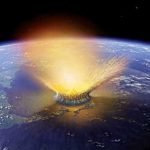Scientists find a rocky planet with only half the mass of Venus
When it comes to finding exoplanets, size matters, but so does weight.
The larger and heavier the planet, the more likely they will be discovered...
Astronomers find a nearby star that a spitting image of a young sun
Our Sun is about 4.6 billion years old.
We know that from models of Sun-like stars, as well as through our observations of other stars...
Black hole’s eating pattern could reveal its size, shows study
The feeding patterns of black holes offer insight into their size, researchers report.
A new study revealed that the flickering in the brightness observed in...
Scientists capture huge rings around a black hole
A spectacular set of rings around a black hole has been captured using NASA's Chandra X-ray Observatory and Neil Gehrels Swift Observatory.
The X-ray images...
Superflares may be less harmful to exoplanets than previously thought, study shows
Astronomers have long suspected that superflares, extreme radiation bursts from stars, can cause lasting damage to the atmospheres — and thus habitability — of...
Earth’s inner core is growing more on one side than the other – here’s...
More than 5,000 kilometers beneath us, Earth’s solid metal inner core wasn’t discovered until 1936.
Almost a century later, we’re still struggling to answer basic...
Scientists capture the first temperature map of asteroid Psyche
A close examination of the millimeter-wavelength emissions from the asteroid Psyche, which NASA intends to visit in 2026, has produced the first temperature map...
Scientists figure out how the asteroid belt attacked the dinosaurs
How do you track an asteroid that hit the Earth over 60 million years ago?
By using a combination of geology and computer simulations, at...
Scientists catch a cosmic boomerang in action for the first time
For the first time, astronomers have observed a cosmic boomerang effect — streams of heavy, molecular gas that are stripped away from a distant...
Shadows on the moon could be hiding water, even in the daytime
Shadows have been known throughout history to be excellent hiding places.
They may even be hiding unexpected things off the Earth as well.
According to a...










